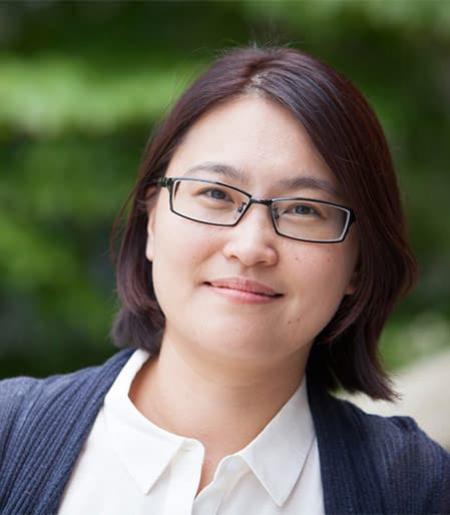Overview
Suyoung Son is a book historian specializing in early modern China and Korea (16th to early 20th century). Her primary research explores how the book mediates embodied and cultural practices of reading and writing. Her focus areas include manuscript and print dynamics; authorship and intellectual property; materiality of book; transnational circulation of text; gender studies; and the textual, physical, and ecological production of knowledge. As a native of South Korea, she earned a Ph.D. from the University of Chicago. Prior to joining Cornell in 2014, she was an assistant professor at the University of Colorado Boulder and a postdoctoral fellow at Stanford University.
Her first book, Writing for Print: Publishing and the Making of Textual Authority in Late Imperial China (Harvard UP; undergoing translation by Beijing University Press), examines the widespread practice of self-publishing by writers in early Qing China, focusing on the relationships between manuscript tradition and print convention, peer patronage and popular fame, and gift exchange and commercial transactions in textual production and circulation. She is currently working on her second book, tentatively titled Cookbooks and Textuality of Domesticity in Chosŏn Korea, which investigates how cookery writings serve as a bridge between textual knowledge and material practice.
With professor TJ Hinrichs (History), she co-organizes the annual Hu Shih Distinguished Lecture in Chinese studies and Cornell Classical Chinese Colloquium (CCCC), a monthly meeting to read original Sinitic texts at Cornell. She has served on executive and prize committees for the Modern Language Association (MLA). She is currently an editorial board member of the academic journal East Asian Publishing and Society.
Publications
Books
The Material Book in Korea, the Fifteenth Through the Early Twentieth Century, co-editor and co-writer of the introduction with Si Nae Park (Cambridge, MA: Harvard University Asia Center, forthcoming).
The Sensorium of the Early Modern Chinese Text, co-editor and co-writer of the introduction with Ariel Fox and Paize Keulemans (Ithaca: Cornell University Press, forthcoming).
Writing for Print: Publishing and the Making of Textual Authority in Late Imperial China (Cambridge, MA: Harvard University Asia Center, 2018).
Articles and Book Chapters
"Cookbooks and Domestic Textuality," The Material Book in Korea, the Fifteenth Through the Early Twentieth Century (forthcoming).
“Taste in Yuan Mei’s Cooking Recipes,” The Sensorium of the Early Modern Chinese Text (forthcoming).
"Cookbooks and the Making of Women's Authorship in the 1933 Copyright Case," Seoul Journal of Korean Studies 38.2 (2025): 227-56.
“Yi Tŏngmu and Women’s Cooking in Late Chosŏn Korea,” Journal of Korean Studies 30.2 (2025): 235-65.
“Publisher at Work: Yu Xiangdou’s Images,” Harvard Journal of Asiatic Studies 82.1 (2022): 37-76.
“Print and Transnational Referentiality: Nam Kong-ch’ŏl’s Printing of Kǔmnǔng chip,” The Routledge Companion to Korean Literature, ed. Heekyoung Cho (London and N.Y.: Routledge, 2022), pp. 75-90.
“Premodern Literary Collectanea,” Literary Information in China: A History, eds. Jack Chen, et al. (New York: Columbia University Press, 2021), pp. 523-32.
“How to Read a Sinographic Text in Eighteenth-Century Chosŏn Korea: Liuxi waizhuan and Yi Tŏngmu’s Compilation of Noeroe nangnak sŏ,” Journal of Asian Studies 78.2 (2019): 329-53.
"Between Writing and Publishing Letters: Publishing a Letter about Book Proprietorship," A History of Chinese Letters and Epistolary Culture, ed. Antje Richter (Leiden: Brill, 2015), pp. 878-99.
"Reading an Authorless Text: The Reception of Jin Ping Mei in Manuscript and Print," Journal of Chinese Language and Literature [Chungguk ŏmunhak nonjip] 81 (2013.8): 439-55.
"Transmitting Haoqiu zhuan in Eighteenth-Century Chosŏn Korea," East Asian Publishing and Society 3 (2013): 3-30.
"Publishing as a Coterie Enterprise: Zhang Chao and Making Printed Texts in Early Qing China," Late Imperial China 31.1 (June 2010): 98-136.
"Positioning Taiping guangji in the History of Chinese Narrative," Journal of Chinese Language and Literature [Chungguk ŏmunhak nonjip] 12 (1999): 251-66 (Korean)
In the news
- Einaudi seed grants finding fertile soil
- Students’ summers saved with global virtual internships
- Einaudi Center awards eight faculty grants

